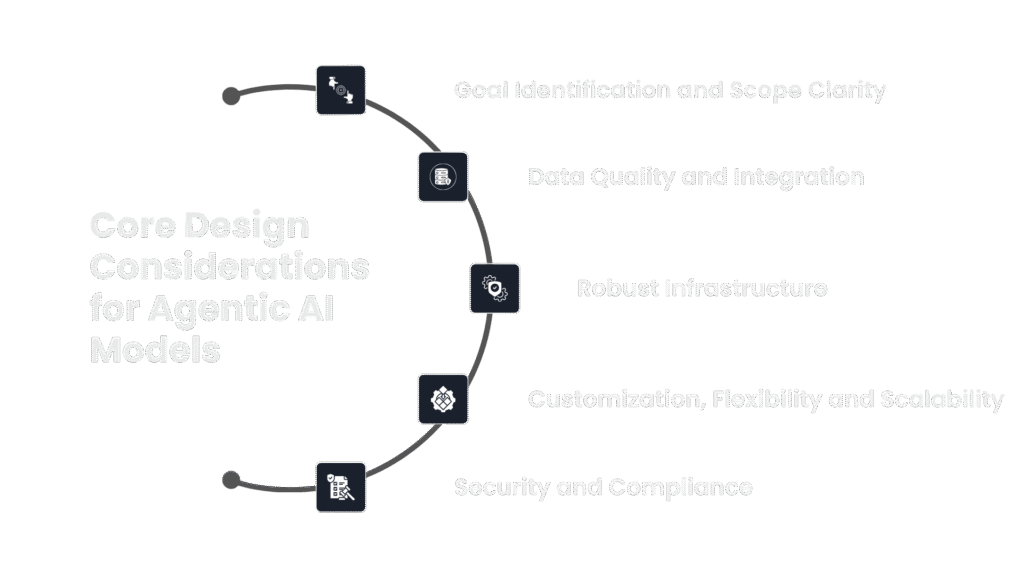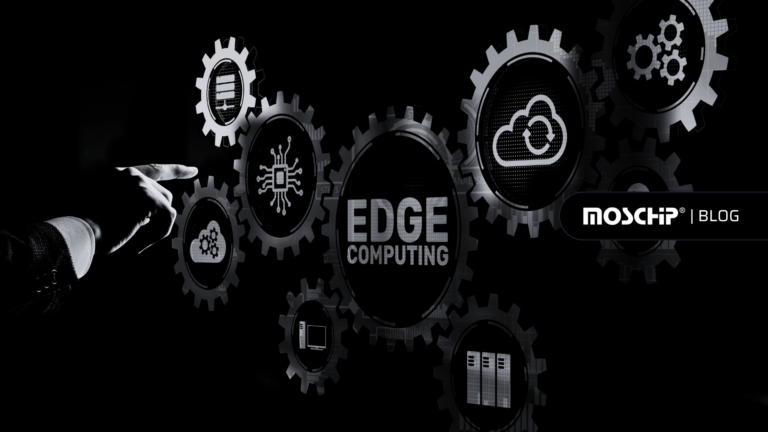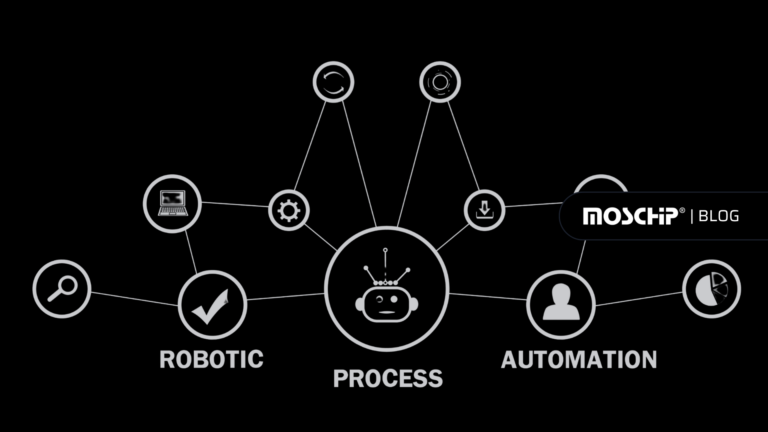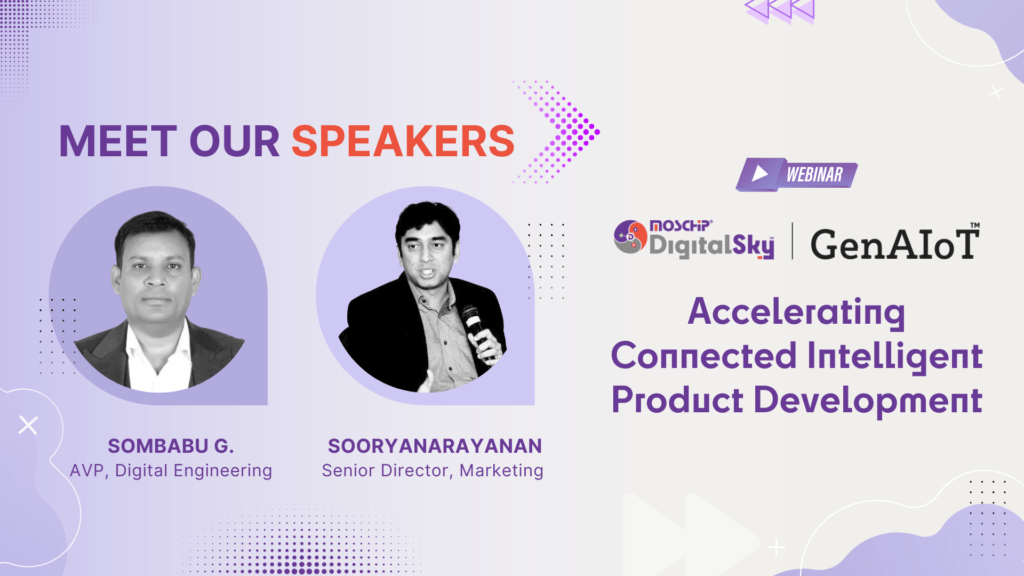Factors You Should Consider Before Developing an Agentic AI Model
AI has completely redefined how we perceive and interact with the world. Many industries have leveraged AI to overhaul their business processes and derive greater value to drive their businesses forward.
Traditional AI systems started as rule-based, where they explicitly operated based on pre-set rules. Then, they evolved into non-rule-based AI with technologies such as deep learning and machine learning, which learn from the datasets they are fed. The success of non-rule-based AI depends on the quality of the datasets.
However, these AI models still cannot make decisions autonomously. When you have tasks that require reasoning, autonomy, and adaptability, you need something more goal-oriented and autonomous, and that is where agentic AI comes into the picture.
Why Agentic AI Is the Next Step Beyond Traditional Models?
AI systems could be used in more dynamic and complicated situations; however, traditional rule-based and task-specific models may not necessarily help you achieve the goal specific to the purpose, especially in mission critical industries. On the other hand, Agentic AI is crucial in this situation because it makes it possible for the system to think, plan, reflect, and make decisions on its own.
Why Traditional AI Falls Short?
- AI operates within specific, defined scopes, cannot generalize or change from its original programming.
- Fragile results are produced by processing inputs without understanding the situational context.
- AI responds to immediate events instead of proper goal planning to react to actions.
What Makes Agentic AI Special?
- Independently sets, changes, and works toward long-term goals that can evolve.
- It keeps learning and improving by using real-time feedback and adjusting to changes in the environment.
- It combines appropriate planning, logical thinking, and reinforcement learning from experience to make decisions
Emerging Need of Agentic AI?
Multi-Agent Collaboration in Distributed Systems
In complex systems like smart cities or smart factories, Agentic AI is important because it can work together with other AI systems. It helps manage tasks by cooperating, developing actions, and solving problems with others on its own, without needing a main controller.
Handling Unstructured and Unpredictable Data Inputs
As regular AI that needs clear and organized data, Agentic AI can understand confusing or incomplete information, like unexpected sensor readings or changes in the real world. This helps it work well in unpredictable or constantly changing environments.
Ethical Decision-Making Under Uncertainty
In mission-critical areas like self-driving cars or AI in healthcare, Agentic AI helps in making smart, ethical decisions and handle complex situations safely.
Core Design Considerations for Agentic AI Models
Goal Identification and Scope Clarity
Goal Identification
- Define the Autonomous Objective: Clearly outline what the AI agent is expected to achieve without human intervention.
Example: An AI agent should autonomously monitor industrial equipment and trigger maintenance alerts before failure. - Clarify the Role Within the Workflow: Identify the AI’s function in the end-to-end system like decision-maker, support tool, data processor, etc.
- Setup Task Scope: Task scope should clearly define whether the AI agent will perform a single, focused task or manage a broader set of related functions within the workflow.
- Establish Success Criteria (KPIs): Set clear ways to measure how well the AI agent is working.
- Set Boundaries: Avoid unwanted actions by limiting what the AI can control or decide.
Now let’s explore some considerable scope clarity for developing Agentic AI:
Scope Clarity
Define Autonomy Boundaries: Decide exactly what tasks the AI is allowed to handle on its own, what kinds of decisions it can make, and when a human needs to step in.
Purpose Alignment: Ensure the AI’s goals and actions remain aligned with organizational values, user interests, and legal norms throughout its operation.
Context Awareness: The scope should explain where and when the AI is supposed to work, including unusual situations where it should pause or ask a human for help.
Responsibility Mapping: Clearly say who oversees the AI’s decisions and outcomes at every stage, when it’s being built, when it’s being used, and while it keeps running.
Data Quality & Integration
Key considerations include accuracy, completeness, consistency, timeliness, and relevance of data across diverse sources. Real-time updates are important, so the AI does not make decisions based on old or wrong data. When using both live and synthetic data, it’s important to carefully check for errors and strange patterns to keep everything running smoothly. Strong security and following data privacy rules help protect sensitive information and build trust in how the AI system works.
For example, in manufacturing, real-time sensor data may sometimes be noisy or incomplete due to hardware faults. An agentic AI system can cross-check such readings with historical patterns or synthetic simulations to identify likely errors and adjust operations proactively. This not only prevents breakdowns but also maintains data reliability across connected systems. As a result, agentic AI becomes a powerful tool for safeguarding and elevating data quality across industries.

Design Considerations for Agentic AI Models
Robust Infrastructure
Agentic AI systems need a strong infrastructure with powerful processing, fast communication, scalable storage, and real-time response. This supports their autonomous decision-making across varied environments.
Let’s explore what kind of infrastructure is required:
- Agentic AI requires high-performance hardware and flexible deployment across edge and cloud.
- Edge devices use NVIDIA Jetson AGX Orin and Xilinx Zynq MPSoC for low-latency, real-time processing and immediate responses. Whereas, in cloud, devices connected to AWS, Azure use multi-core CPUs (AMD EPYC, Intel Xeon) and GPUs (NVIDIA A100, H100) for higher latency due to network communication, suitable for heavy computation not requiring instant response.
- Edge devices prioritize low power consumption to suit hardware constraints, whereas cloud systems consume more energy but offer scalable and centralized computing resources.
- Kubernetes and Docker facilitate efficient management and scaling of AI deployments.
- As an example, on-site servers often use 64-core AMD EPYC or Intel Xeon CPUs, paired with 256–512 GB RAM and high-speed NVMe SSDs for optimal performance.
- Storage includes 512 GB to 2 TB SSDs at the edge and encrypted, tiered cloud storage with automatic backups.
- Real-time OSes (FreeRTOS, Zephyr) and fast networks (5G, fiber at 1–10 Gbps) support sub-millisecond responses and smooth edge-cloud communication.
Customization, Flexibility, and Scalability
When developing agentic AI, careful attention to data customization, flexibility, and scalability is crucial to ensure robust performance in dynamic environments. First, data customization involves tailoring data ingestion and preprocessing pipelines to handle diverse, unstructured, and incomplete data sources. This includes using smart methods to clean the data, make it consistent, and pick out important details so the AI can understand real-world inputs correctly.
Flexibility in agentic AI architecture means designing modular components that support various AI models, algorithms, and hardware platforms. Using containerization and microservices enables seamless integration, updates, and interoperability across distributed systems. The AI must also support dynamic task allocation and real-time decision-making to respond effectively to changing conditions.
Scalability demands a robust infrastructure capable of handling growing data volumes and increased computational loads. Cloud-native architectures, microservices, and distributed computing allows agentic AI to efficiently expand across domains and user bases. Additionally, real-time monitoring and resource optimization ensure consistent performance as the system scales.
Security and Compliance
Robust data security includes implementing controlled access control mechanisms to restrict data and system access strictly to authorized users and processes, minimizing the attack surface. Role-based and attribute-based access control models are essential to manage varying permission levels effectively. Encryption is indispensable, both for data at rest and in transit, using advanced cryptographic protocols such as TLS and AES to protect sensitive information from interception or breaches.
Compliance is essential for developing agentic AI, ensuring ethical use, preventing bias, and maintaining transparency and accountability. It requires strict adherence to regulations like GDPR and HIPAA, which mandate data minimization, user consent, secure data handling, encryption, audit logs, and controlled access. Compliance frameworks help AI systems meet evolving legal and industry standards while managing risks such as misuse, data breaches, and legal liabilities.
Continuous monitoring, vulnerability assessments, incident response plans, and human oversight ensure AI remains fair, explainable, secure, and aligned with regulations. Overall, strong compliance safeguards user privacy and system integrity and builds trust in AI deployment.
Agentic AI is ready to bring a change in industry applications by enabling autonomous decision-making, adaptive learning, and collaborative task execution across distributed systems. Its integration with edge computing, real-time data processing, and modular architectures ensures low-latency, scalable solutions. Industries from manufacturing to logistics will benefit from self-optimizing systems with minimal human oversight. As multi-agent frameworks and context-aware AI evolve, the deployment scope will expand to complex, dynamic environments. Continued research in explainability, safety, and interoperability will drive broader adoption and innovation.
MosChip DigitalSkyTM AI/ML platform, combined with its strong edge and cloud engineering capabilities, is a key enabler in building agentic AI systems. With expertise in real-time data processing, model deployment, and system optimization, MosChip supports autonomous decision-making across distributed environments. Its scalable edge-cloud architecture ensures low-latency performance and seamless coordination among AI agents.
To know more about MosChip’s capabilities, drop us a line and our team will get back to you.
Author
Darshil is a Marketing professional at MosChip creating impactful techno-commercial writeups and conducting extensive market research to promote businesses on various platforms. He has been a passionate marketer for more than four years and is constantly looking for new endeavors to take on. When He’s not working, Darshil can be found reading and playing guitar.








